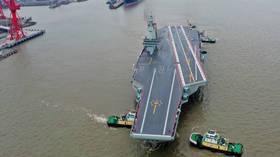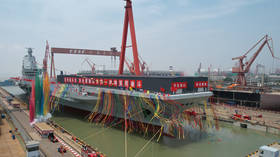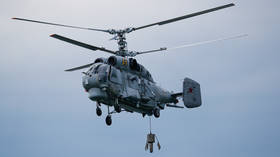China tests next-generation aircraft carrier

The Chinese navy on Wednesday launched sea trials of its third and most advanced aircraft carrier, according to state media reports. The tests mark the final stage before the warship is put into service.
With a displacement of 80,000 metric tons, the Fujian dwarfs the People’s Liberation Army Navy’s (PLAN) two active carriers, the 66,000-ton Shandong and the 60,000-ton Liaoning. Only the US Navy operates bigger aircraft carriers than the Fujian.
The ship features a full-length, flat flight deck with an advanced catapult-launch system for jets that will enable it to launch larger and heavier aircraft than the Shandong and Liaoning.
The final testing begins nearly two years after the fully domestically designed and built aircraft carrier was first unveiled in June 2022, and comes at a time of escalating tensions in the South China Sea.
The sea trials were intended to assess the “reliability and stability of the carrier’s propulsion and electric power systems,” according to the Chinese navy. The carrier was named among “the most important military hardware” Beijing is developing.
Analysts say Fujian’s ability to launch larger warplanes carrying higher munition loads further away will give the carrier a greater combat range than its predecessors in the Chinese fleet, providing the country’s navy with blue water capabilities, i.e. the ability to operate on the high seas.
“These sea trials mark the first major step in China’s developing the capacity to project sea-based air power into deep ocean areas,” former US Navy captain and former director of operations at the US Pacific Command’s Joint Intelligence Center, Carl Schuster, told CNN.
“The Fujian’s sea trials represent an important milestone for the PLAN, marking its entry into the small club of top-class carrier aviation-capable navies,” affirmed John Bradford, a Council on Foreign Relations International Affairs fellow.
The aircraft carrier is expected to enter service by late next year or in 2026. When it joins the PLAN fleet, the Fujian will become the “most visible symbol of China’s growing naval power,” according to Brian Hart, a fellow with the China Power Project at the Center for Strategic and International Studies (CSIS).
At present, China has the world’s largest naval force (both in ship counts and overall tonnage), with more than 340 warships and counting.
The announcement of a fourth carrier for the Chinese fleet could come soon, PLAN political commissar Yuan Huazhi said in March, as cited by the Global Times.













